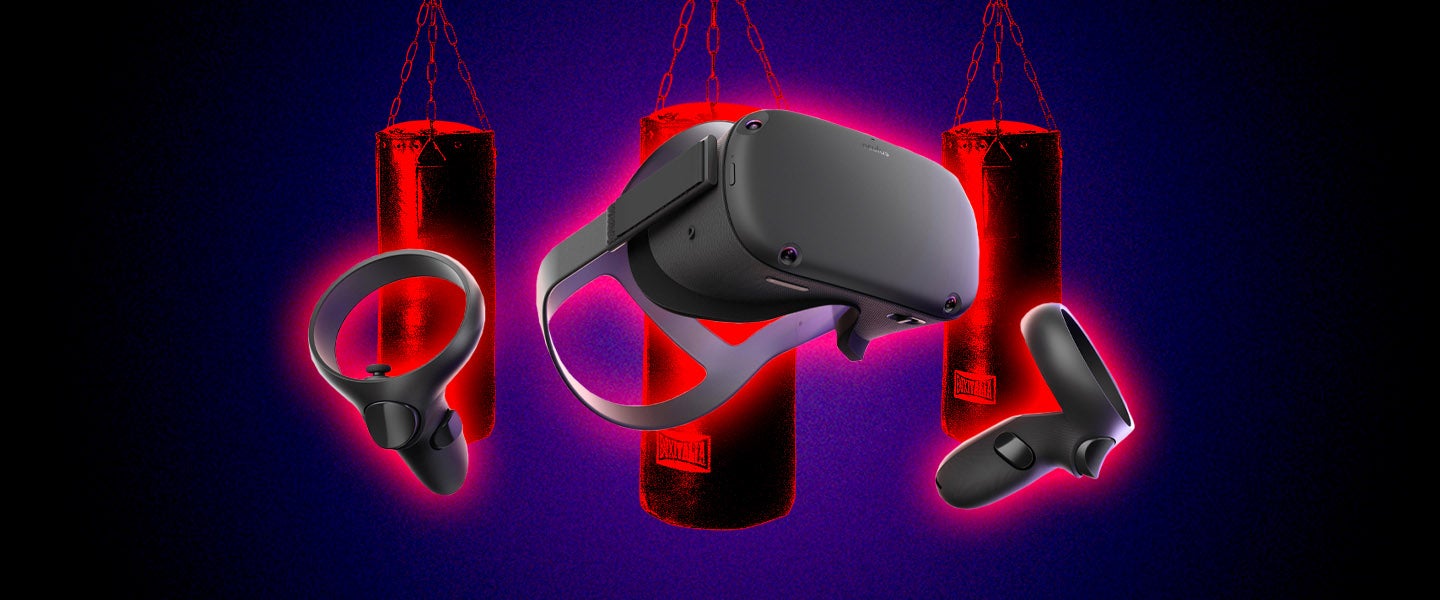New Year’s resolutions are shit. I know they’re shit, and you know they’re shit. There’s simply way more to making lasting, worthwhile positive changes in your life than picking an arbitrary date like January 1st and deciding that, on that day, you’re suddenly going to do the healthy thing and eat right or start working out — morning, noon and night.
That’s where my head’s been for the last month, at least. I mean, if I can’t find the will power to go to the gym the other 364 days of the year, I’m not suddenly going to find it on New Year’s Day.
And that’s mainly because I hate the gym. I hate going there, and I hate it even more once I’m inside. I hate all the things that it reminds me of: That I don’t know what I’m doing when I’m there; that the things I’m doing are probably not helping me get in shape; and that, if I do want to do something to get me in better shape, it’s going to cost me a ton of money in personal training — like $60 to $100 a pop. And even then, it’s going to hurt so much to get things moving in the right direction that I’m sure to come up with every excuse in the book to quit.
But the reality is, I know that I need to do something to get back on track. I’ve tried doing it straight, and failed more times than I can count. The holy grail, of course, would be picking a workout that’s both effective and fun. Because if it’s fun, I won’t hate it; in fact, I might even want to keep doing it. Unfortunately, I’m sorry to say that, as far as my tastes go, I haven’t found a workout like that yet. A pilates class at Equinox was about as close to “fun” as I’ve found, but it’s twice a week, and more importantly, it wasn’t $200-a-month-for-a-gym-membership fun.
No, I needed to think outside of the box if I was going to find my own personal workout holy grail. I needed to trick myself into thinking something that wasn’t what I wanted, was. Basically, what I needed to do was bury my fitness vegetables in a shitload of melted cheese.
Which is exactly how I found VR boxing.
The Problem: I’ll never stick with my desire to get fit if I hate what I need to do to get fit.
The Alleged Cure-All: VR boxing — as in boxing, but in virtual reality. I know, sounds like something out of Tron, doesn’t it?
Well, the first step to becoming Tron yourself is picking out the VR system you want to use. There are a number of them on the market — Oculus, PlayStation VR, HTC Vive and Samsung VR to name the big ones — and they all come with a number of positives and negatives considering that the technology is still in its “3D TV phase,” even if it appears that it’s going to survive for the long haul (which 3D TV may not).
I wanted a system that wasn’t tethered to a PC or an Android phone — considering I don’t own a PC or an Android — and that was relatively inexpensive. That ruled out Oculus Rift and HTC Vive, both of which require a PC to use, as well as the Samsung Gear, which is only compatible with Samsung phones. Thus, the only two big guys still standing were PSVR, which would work with my PlayStation 4, but requires a cord to tether to the box, and the Oculus Quest, a standalone device that has no cords but a limited library of apps.
I ended up choosing the Quest because I was worried that having to tether to my PlayStation might land me, and because I knew there was a “game” on the Quest I wanted to try: BoxVR, a highly rated boxing app that would be perfect for pretending that I wasn’t exercising — I was playing video games.

I secretly love video games, but moreover, I’ve been enamored with the idea of VR since the Oculus Rift was first announced, and the videos of people falling out of their chairs thinking they were actually on roller coasters made the rounds on YouTube.
So, naturally, exercising via virtual reality checked all my boxes: I could use the device in the warmth and comfort of my own home, away from judgy gym-rat types; I could be up and “boxing” in less than five minutes, before I had a chance to change my mind; and it scratched a minor-yet-deep-seated obsession with cool tech, which meant that I could tell myself that what I was doing wasn’t working out at all — I was playing with something cool and cutting edge.
How Much an Oculus Quest Will Cost You: $399.99, games not included.
Most Queasiness-Inducing Game on It: Epic Roller Coasters.
The Experience: First, let’s talk about the first time you put on the Quest: It’s mind-blowing. Truly. As you set this thing up by putting what is ostensibly a black box over your eyes, you’re greeted by a black-and-white, almost Matrix-like image of whatever room you’re standing in, as if you can see right through the goggles. It’s weird, and this weird is good.
Once that coolness factor wears off and you’re taken through a highly entertaining tutorial, you’re placed in a virtual game room where you can buy games, use apps like Netflix and Hulu or just stand there and marvel at your hands, which, of course, you can see and use thanks to a couple of futuristic controllers your holding that come with the Quest.
BoxVR is one of those “games” you can buy (for $29.99, though if it was for a regular console or PC, it’d probably be significantly cheaper). Those scare quotes aren’t to say that it’s bad, but you can tell that much of what’s available to play on VR is more proof-of-concept than a fully fleshed-out experience. But, Googling around, many reviews of the Quest singled out BoxVR as the app to try if you’re into using the system to get in your daily cardio, so I was into it.
The first BoxVR screen you’re greeted with reminds me a lot of the Peloton: Lists of instructors (albeit fake ones) and workouts, all organized by level (Beginner, Intermediate, Advanced) and time. You can take a two-minute class and you can take a 45-minute class, but the former isn’t necessarily easier than the latter. If anything, over the weeks I spent playing BoxVR, I found that the shorter the class, the harder you’re going to be breathing when it’s over.
Other than that, the classes themselves aren’t all that different — variation only comes from the aforementioned differences in intensity, as well as their music and environment. And when I say “variation in music and environment,” I mean that, technically, you get to work out to different songs, though they’re all what can only be described as royalty-free techno; and that you get three choices of “where” you’re going to work out: Two virtual-reality “dojos” (which look pretty much the same) and one futurescape that looks like something out of F-Zero’s Mute City.
But no one works out to this game for the music or the environment. For BoxVR disciples, I suspect it’s all about the workout. BoxVR gameplay revolves around floating targets that fly at you from way off in the distance at speeds set to the beat of whatever nondescript house music track is playing at any given moment. There are seven types of targets: Right-and-left jabs, hooks, uppercuts and a two-hand block. There are also obstacles that force you to crouch or lean either to the left or right.
Early on, the game seems easy, but when the beat gets-a-boppin’, shit starts flying at you fast and furiously. A counter keeps track of what you’re hitting and what you’re missing, and if you string together enough combos, you get some sort of bonus. That said, if you ignored that part of BoxVR completely, you wouldn’t be missing anything; the game never explains the points system, and it’s not like you level up to fight Mike Tyson or anything.
The good news is that the game is intuitive, easy to master and definitely gets your heart rate going. Even after a 10-minute workout, I was sweating. The downside of all that sweat, however, is that my goggles tended to absorb a lot of that perspiration. And so, when my girlfriend wanted to give it a try, we spent five minutes wiping off the thing just to make it usable.
Hardest Part of BoxVR: Not even Floyd Mayweather could keep up with the game when it starts combo-ing hooks with uppercuts and blocks at presto tempo music.
The Result: While BoxVR lacks the polish of AAA games you’re likely to play on a console or computer, I ended up enjoying myself quite a bit bobbing, weaving and punching at hypercolor targets while pretending I was at a rave. The novelty of working out in virtual reality never really wears off; somehow, the game manages to stick the landing, skirting the line between game and exercise routine relatively well considering its bare-bones gameplay.
Still, there were some things that made me question the game’s (and system’s) utility. For one, you look absolutely ridiculous while you play. You can’t see yourself (other than your hands) or people around you while you’re working out, and I found myself self-conscious when I heard my girlfriend come through the front door while I was working out in the living room.
Also, a boxing session in your living room will never hold a candle to what you’ll experience in an actual gym with heavy bags and gloves. The controllers aren’t heavy at all, so most of what you’re getting out of the session is good cardio; in other words, don’t expect BoxVR to help you get physically stronger because it won’t. But if you can be satisfied with a good sweat in 30 minutes and you can afford the $400-plus price tag, working out in VR is no gimmick — you’ll burn calories, and you might even have fun doing so.
As for me, if my mission to start the year was to get comfortable with the idea that I could find a routine I was happy with and might ladder up to more in the future, I definitely think I found something I can stick with — even if I need to wait for any witnesses to leave the room to do it.
Jeff’s Rating: 8/10

